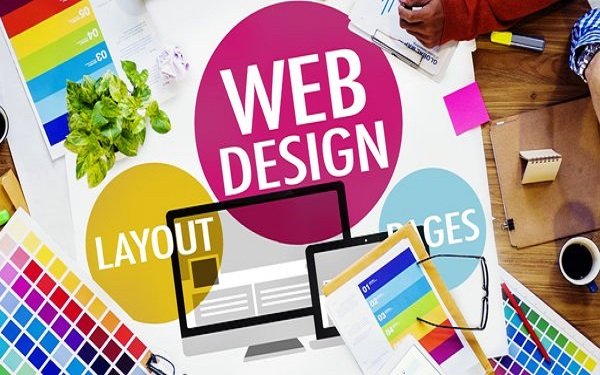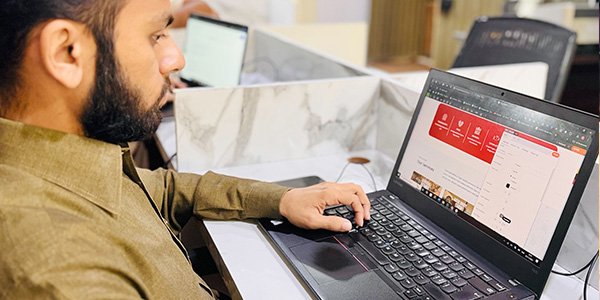How Will AI Become the New Creative Partner for Web Designers in 2026?
For years, designers feared AI would replace them, but by 2026, it’s clear AI isn’t here to compete; it’s here to collaborate. Modern web design thrives on partnership: designers provide creativity and emotion, while AI handles data, testing, and precision. This shift frees designers to focus on storytelling, imagination, and human connection. AI has become a creative ally, offering insights, predicting trends, and amplifying ideas. It’s like working with an endless, energetic teammate who enhances your vision. The future of design lies in balancing human intuition guiding machine intelligence.
As creativity and technology merge, designers evolve into storytellers and innovators, shaping experiences that feel smarter, more emotional, and beautifully human.
How AI Is Moving From a Simple Tool to a Creative Co-Designer

The Core Capabilities of AI as a True Creative Partner
1. Generative Layout & Design
1..A designer provides a short description like “a minimalist travel blog with warm tones.”
2..The AI generates several layout versions, each with unique typography, color balance, and grid structure.
3..The designer refines one version, while the AI automatically adjusts padding, alignment, and composition.
Example: Tools like Figma’s “Designer AI” and Wizard’s “Auto Design” already create homepage structures in seconds.
Limitation: AI sometimes misreads emotional tone or overuses common patterns.
2. Adaptive & Contextual Design
1..The AI tracks user data (like location, device, and scrolling behavior).
2..It changes small details, color brightness, button size, or content order to suit that specific user.
3..The experience becomes smoother, faster, and more relevant without manual updates.
Example: An e-commerce site may highlight “winter deals” for cold regions while showing “summer picks” for warmer ones.
Limitation: Designers must maintain privacy and avoid over-personalization that feels invasive.
3. Style Synthesis & Branding Intelligence
1..Designers feed the AI with brand materials, previous campaigns, social visuals, and font guides.
2..The AI identifies style patterns and creates new designs that stay visually consistent.
3..It can even adapt the style for different markets or demographics while keeping the same “brand feel.”
Example: A coffee brand’s AI could automatically design a poster or landing page using the same warm tones and font rhythm used in their packaging.
Limitation: It still needs human review to maintain originality and avoid repetitive design.
4. Content & Asset Generation
1..A designer gives a quick command like “create three icons for eco-friendly packaging.”
2..The AI generates multiple options using consistent line weights, brand colors, and shapes.
3..Designers pick or tweak the best ones directly within their workflow.
Example: Tools like Canva, Magic Media, and Adobe Firefly already create high-quality design assets on demand.
Limitation: Generated content sometimes lacks emotional depth or originality.
5. Smart Motion & Interactions
1..The AI studies user flow and behavior.
2..It adds animations only where engagement drops or attention fades.
3..These animations are tested instantly for usability and emotion.
Example: If users hesitate near a call-to-action button, AI may add a gentle pulse animation to attract focus.
Limitation: Too much motion can distract users, so balance is key.
6. Cross-Device & Multimodal Coherence
1..The AI analyzes layouts across multiple device types.
2..It auto-adjusts proportions, font scales, and image compression for each screen.
3..It also synchronizes voice and visual experiences, keeping tone and flow uniform.
Example: When a user starts browsing a product on mobile and continues through a smart home device, AI keeps color tone, copy, and structure consistent.
Limitation: Multimodal testing is still complex and expensive.
7. AI-Powered Testing & Optimization
1..The AI observes how users navigate a website.
2..It identifies friction points, slow clicks, skipped buttons, or unread sections.
3..It automatically tests new variations and reports which version performs better.
Example: Some AI tools already run A/B tests 24/7, adjusting content placement to boost conversions.
Limitation: Designers still need to interpret insights correctly and prevent over-optimization that sacrifices brand voice.

The New Role of the Web Designer in 2026
Skills That Define the Designer of 2026
The Hybrid Workflow: Human + AI Collaboration
By 2026, web design will become a creative dialogue between humans and AI. Designers set intent through prompts describing tone, audience, and purpose. AI then generates multiple design variations. The designer refines details, ensuring emotional depth and alignment. AI analyzes user responses, adapting visuals for better engagement. This continuous cycle creates faster, smarter, and more personalized results, a true partnership where AI offers possibilities and humans provide vision, emotion, and direction, blending technology with creativity to craft living, responsive web experiences that feel both intelligent and deeply human.
Decision Authority: The Designer as the Final Filter
Even with AI generating thousands of ideas, the human designer remains the final voice. Their judgment defines what aligns with the brand, connects emotionally, and expresses the true vision. Designers filter AI outputs, preserve originality, ensure ethics, and balance data with feeling. AI accelerates creativity, but only human taste, empathy, and storytelling transform designs into meaningful, unforgettable experiences.

